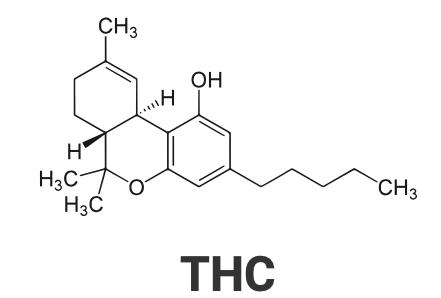
It’s Tuesday, and you know what that means: time to check in on E1011 Labs favorite aromatic molecules – terpenes.
Close your eyes and imagine you’re deep inside a pacific northwestern forest surrounded by evergreens. The air is crisp, and the ground still wet with morning dew. Can you almost smell the woody sharpness of the pine needles? Take in the fragrance, because this week we’re looking at Pinene!
What is Pinene?
Pinene is a terpene, which are the wonderful compounds that make up all of our favorite smells. These pungent molecules are in everything from fresh flowers to sour citrus fruits and play a vital role in the compositions of cannabis. Terpenes do more than just smell nice, though; they can actually have all sorts of medicinal and therapeutic benefits. If you haven’t been keeping up, be sure to check out our Guide to Terpenes to learn all about these incredible compounds.

One of the most common terpenes in the cannabis plant is pinene – it’s what gives cannabis that biting pine-like smell. Pinene isn’t just in cannabis. As you might have also guessed from the name, it’s also abundant in pine trees. If you still haven’t taken your Christmas tree, then your living room is probably teeming with the rich aroma of pinene right now!
The pinene terpene can be further broken down into α-pinene (alpha pinene) and β-pinene, which are two isomers that are commonly used to represent the monoterpene, pinene.
Benefits of Pinene
Now that we know a little bit about pinene let’s jump right into its benefits.
Have you ever noticed your breath while taking a walk through a pine forest? Doesn’t it seem like you’re able to breathe deeper than usual? It’s not just the relaxing ambiance of nature; the pinene in the air is actually helping to open up your lungs.
Lots of terpenes, like myrcene, for instance, are noted for adding sedative-like qualities to cannabis. Pinene, on the other hand, is one of the few terpenes that produces the opposite effect. Strains with high concentrations of pinene tend to be energetic, uplifting, and focused.

What pinene does have in common with plenty of other terpenes, however, is its penchant for reducing inflammation.
Research suggests that pinene can function as a bronchodilator – a substance that decreases resistance in the airways by dilating the bronchi and bronchioles. This property can be extremely useful in helping treat breathing conditions such as asthma. Pinene has so many different pharmacological uses that it has even been dubbed as the Miracle Gift of Nature in this study published.
Pinene is an abundant terpene found in pine essential oils but can be even more beneficial when it is within your cannabis/hemp plant. When terpenes and cannabinoids get together, they can work together to enhance one another. This phenomenon is known as the entourage effect.
Dr. Ethan Russo’s famous paper Taming THC explores the entourage effect in great detail and specifically notes an interaction between pinene and THC. Dr. Russo theorizes that because pinene can function as an acetylcholinesterase inhibitor, it may help to reduce the memory impairment associated with THC consumption. That’s an exciting interaction we won’t soon forget!

Where to Find Pinene

Pinene’s sweet piney smell is distinctive, but when going by smell alone it can be difficult to ascertain if a particular strain has high pinene percentages. Always check the lab results to be 100% sure pinene is present in your cannabis.
Strains that often have large amounts of pinene include:
- Jack Herer
- Blue Dream
- OG Kush
- Romulan
Both stelo™ Uplift and stelo™ Relax, the disposable hemp cartridges that work with our elon® CBD delivery device, contain hemp flower with plenty of pinene. They’re an easy way to experience the sublime effects of CBD and pinene!
Tune in next Tuesday when we shift the spotlight from limonene to another exciting terpene – Linalool!



